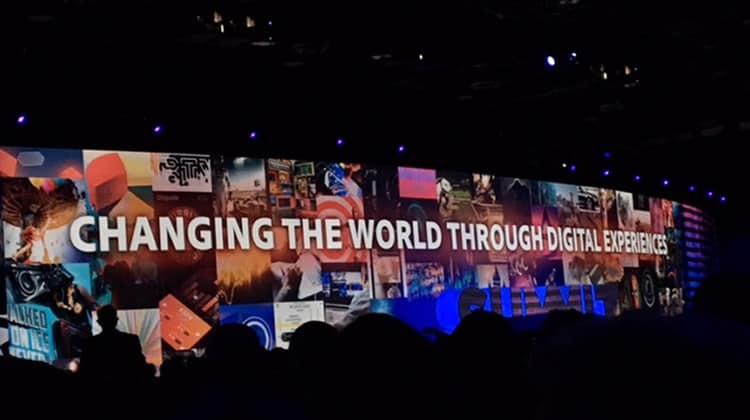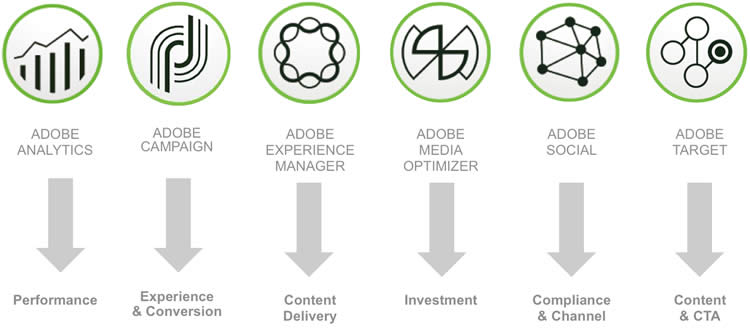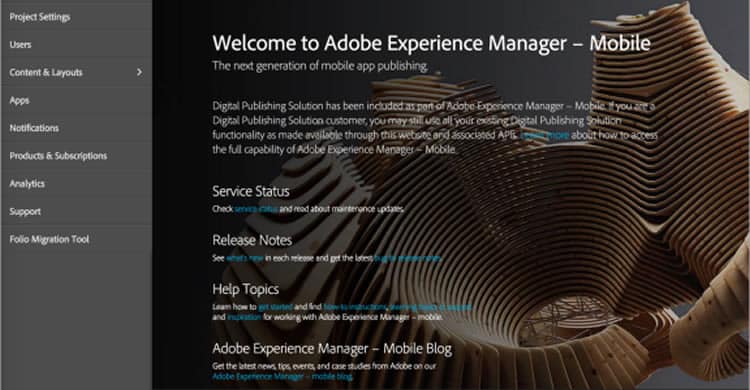
This year, Adobe’s Summit conference moved from Salt Lake City to Las Vegas, likely in an attempt to accommodate the ever-growing number of attendees and speakers. Adobe claims that 10,000+ digital marketers, data scientists, developers, and designers attended this year’s event. That’s probably why the event was held at the Sands Convention Center, the third largest in the world.
The prospect of listening to what this incredible array of speakers had to say was too enticing. So we packed our stuff and headed over to Vegas to check out the conference!
This Year’s Theme – Experience
The theme of this year’s conference was Experience – an admittedly interesting direction for a marketing conference. Over the course of the week, however, the importance of ‘experience’ in digital marketing became more and more apparent.
The sheer breadth of topics and concepts covered at the conference painted the future in a light where user experience has evolved to move beyond the realm of web and application development.
UX and Marketing are now Inseparable
We have long said that there is an overlap between UX and marketing. For those of you that are using Adobe Marketing Cloud, you are a part of the biggest thing in marketing. The Marketing Cloud was designed for consistent, relevant, data-driven, targeted and automated marketing.
You may be asking yourself what does that have to do with user experience design?
A lot, actually.
UX designers know that custom experiences make the internet go ‘round. All jokes aside, experiences driven by user data and context are among the most powerful tools in the UX designer’s tool belt.
Due to the degree of cross-product integration in the Adobe Marketing Cloud, marketers can manipulate a wide variety of data to bring users the most effective, experience-oriented campaigns imaginable.

Cross channel campaigns and realtime interaction management are among the things that allow marketers to bring relevant, cross-platform content to users where it affects them the most.
Historically, the process for creating and optimizing marketing campaigns would, ideally, involve a UX designer’s input. This is true when determining such things as the most effective placement of ads, the most effective cross device implementations, etc.
As Adobe Marketing Cloud continues to blossom into the data and usability-driven marketing platform it was always meant to be, we should start to see the role of the UX designer diminish in the marketing world.
The Mobile UX Landscape is Shifting Ever-So-Slightly with
AEM Mobile

Organizations that wish to reach their customers with immersive mobile experiences are faced with two options:
- Build it in house
- Hire an agency
Non-technical organizations have traditionally been confined to the latter, due to the nature and complexity of the development process for mobile applications.
This is all about to change with Adobe Experience Manager Mobile (AEM Mobile), an all-in-one tool that makes mobile application development significantly more accessible (formerly DPS 2015 Beta).
In terms of the Software Development Lifecycle (SDLC), the development phase has never been the major hurdle when building a mobile app in-house, as there a number of click-and-drag app makers out there. The challenge has always been UX.
Let’s face it, UX is a requirement. Otherwise, you’d be reduced to the “spray and pray” method, which often ends up being a colossal waste of time.
We sat down with Bridget Roman, Senior Product Marketing Manager for AEM Mobile, to get her insight on the matter.

According to Roman, AEM Mobile is able to draw on the deep insights and intelligent data capabilities of all Adobe products across the Marketing Cloud, giving the software a powerful foundation for informed interface design and content management features.
In an effort to compound on the constant flow of user data generated across the Marketing Cloud, AEM Mobile automatically adjusts content and features based on the data with which it is presented.
Thus, the platform, in effect, negates the need for the discovery phase of the SDLC, as well as the need for user research, and a number of other time-consuming UX design requirement.
Here’s a challenge: ask any design and development agency how much of the time spent developing a mobile app goes toward research in one form or another – that’s how much time this dynamic and intelligent mobile CMS and app builder could save your organization.
From a purely logistical perspective, the ability to centralize your content, and publish it to either the mobile application or web page from within the same dashboard is unbelievably useful, and time-saving.
Adobe says the Future of Marketing is ‘Experience’
What happens when the leader in enterprise marketing software tells the industry that the future is experience? It’s simple really: everyone has to follow suit or risk under-performing – or worse, becoming irrelevant.
So what does the future of marketing imagined by Adobe look like?
It is a future where marketing is conducted on the premise of providing users with the most intuitive and data-driven campaigns we have ever been able to put out. In other words, marketers will rely on the continuity and relevancy that is now well within arm’s reach, to convert more and more users.
Want to learn more?
Want to get an industry-recognized Course Certificate in UX Design, Design Thinking, UI Design, or another related design topic? Online UX courses from the Interaction Design Foundation can provide you with industry-relevant skills to advance your UX career. For example, Design Thinking, Become a UX Designer from Scratch, Conducting Usability Testing or User Research – Methods and Best Practices are some of the most popular courses. Good luck on your learning journey!
